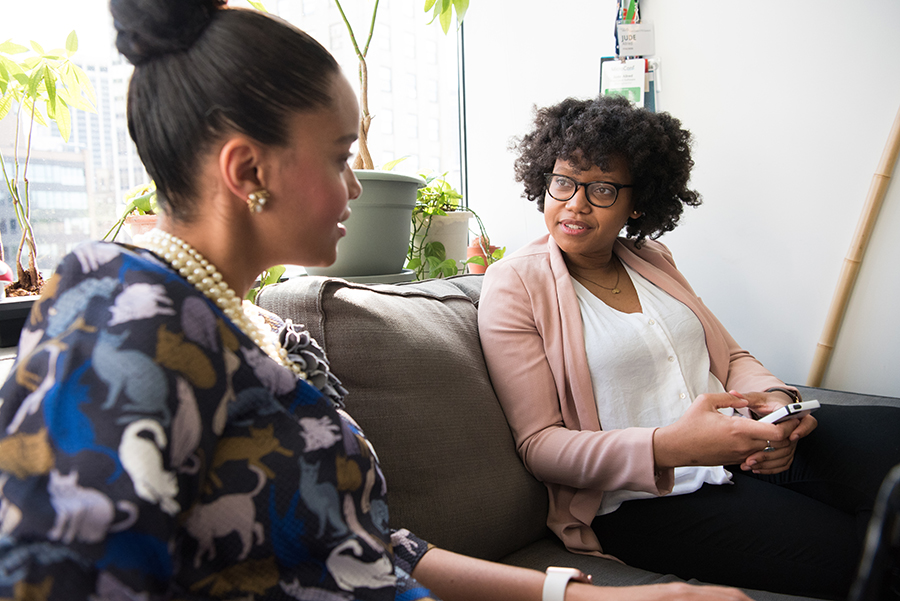Attitudes are changing fast. By 2020, half of global employees will be millennials, according to PwC (1), with Gen Z waiting in the wings.
As digital natives, millennials communicate, gather information, and purchase much more in the virtual world than previous generations. Better-educated, highly ambitious, and purpose-driven, they are more likely to switch employers in search of career progression, development experiences, and the advancement of a social cause. And as the first generation that will face the full realities of climate change, they are passionate champions of sustainability.
Financially, millennials are often stressed by the burden of student loans and the rising cost of urban living. They tend to be value-conscious purchasers, although 75% are likely to spend on items like clothing, cars, and phones that help them stand out and compete with friends (2). However, the millennials’ fortunes are likely to change over the next three decades as they become the beneficiaries of a $30 trillion intergenerational wealth transfer (3)—the largest in history. The impact of this windfall will reverberate in the corporate boardroom, as millennials increasingly insist that companies receiving their investments meet higher environmental, social, and governance (ESG) standards. The sustainable investment movement already influences a quarter of all assets under management in the US (4) and is poised to grow rapidly.
For all these reasons, it’s increasingly important for senior executives in today’s fast-moving organizations to stay in touch with younger generations’ changing attitudes—as employees, consumers, and investors. Meanwhile, millennials must feel more engaged in shaping their company’s strategic direction and that their voice has a channel to be heard.
One very effective tool for bridging this generational divide is “two-way” mentorship. The origins of this form of learning can be traced back to GE’s reverse mentoring programs under Jack Welch, which were adopted by many other leading organizations such as HP, Target, Cisco, BlackRock, and Ogilvy and Mather. Traditionally, reverse mentoring was more of a one-way street for senior leaders to learn about modern technologies from younger tech-savvy employees in a safe, open environment.
But companies soon realized that reverse mentoring could be applied to bridge other disconnects between diverse segments of workers. For example, in one P&G division, senior male managers were matched with young female staff to address the problem of high female turnover in middle management roles. The program helped male leaders build greater empathy for the challenges faced by their younger female mentors. In contrast, the female managers gained anchoring relationships with senior executives, which helped increase female retention.
In recent years, it seems that reverse mentoring is evolving again. This time, it is becoming an effective process for two-way engagement on a broad range of strategic issues ranging from the organization’s social purpose and sustainability to product design and customer engagement. For example, Michael Jacobs, General Manager of Microsoft Norway, explains how his millennial mentor “is mentoring me on what his generation is interested in, …, how we can make ourselves attractive for young talent, …, and how we can stay relevant to them both as a potential employer and as an important customer segment.” (5).
Two-way mentoring can also help to navigate some of the hierarchical barriers that impede innovation. In the world of fashion, CEO of Estee Lauder Fabrizio Freda was so impressed with how a team of young employees helped him understand how millennials “fall in love with brands,” he formalized a reverse mentoring program for 300 of the company’s senior executives and set up “millennial advisory boards” to advise executive teams. So far, the efforts have led to a new range, Estée Edit, targeting millennial women and promoted primarily on social media by celebrities like Kendall Jenner (6).
In my experience of setting a broader scope of dialog in two-way mentoring, the benefits are coming through loud and clear. Executives view it as a strategic component of their lifelong learning, which helps them gain valuable perspectives on specific business issues. Millennials feel valued for their contributions to corporate direction and innovation. But in addition to boosting engagement and retention for both younger and older employees, two-way mentoring could be an important catalyst for the kind of broader stakeholder engagement in corporate affairs being advocated by voices such as JP Morgan CEO Jamie Dimon and presidential candidate Senator Elizabeth Warren.
Reference Articles:
2. How Millennial Spending Habits Compare to Other Generations
3. The “Greater” Wealth Transfer: Capitalizing on the Intergenerational Shift in Wealth
5. Reverse Mentoring: How Millennials are Becoming the New Mentors




































